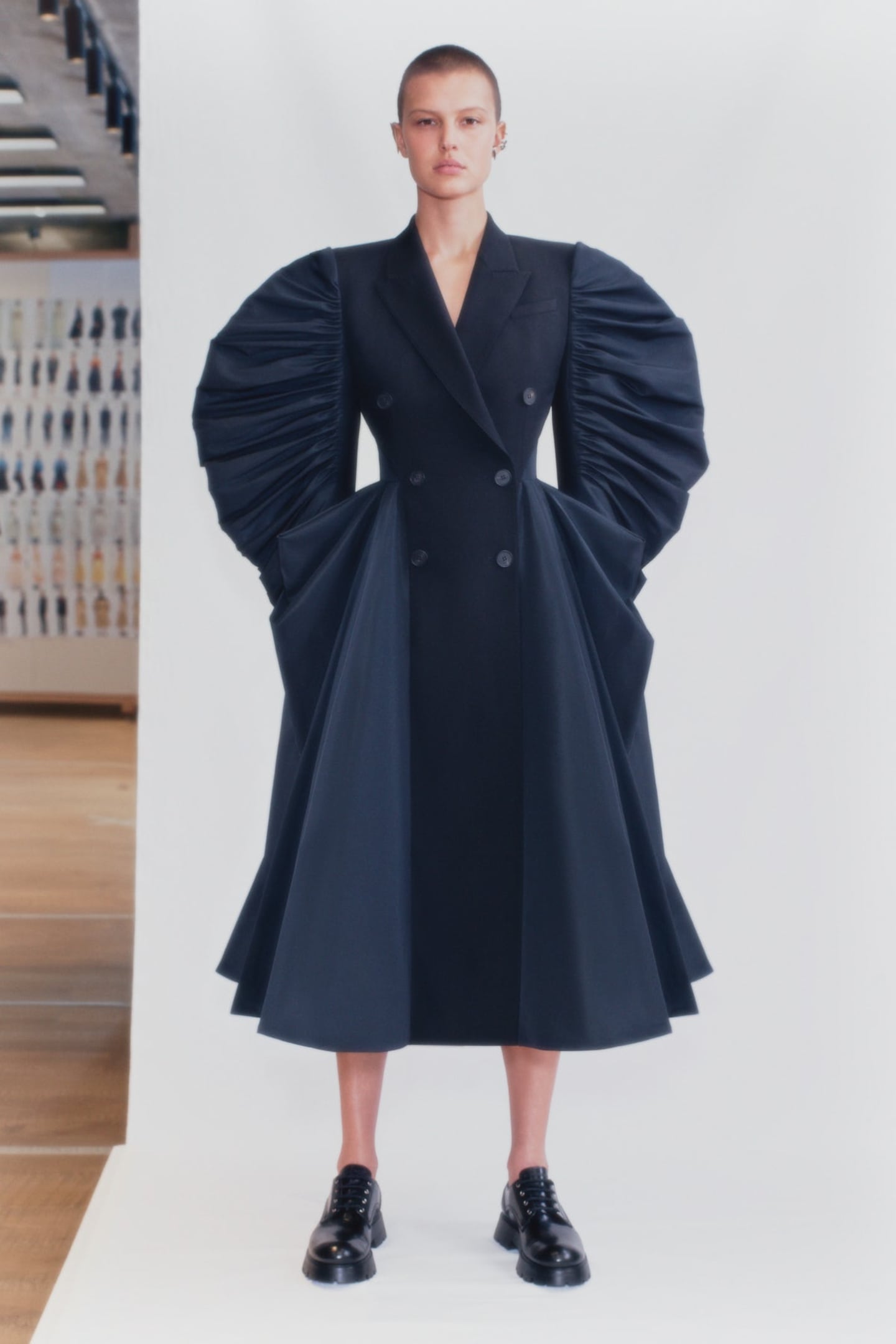
The Business of Fashion
Agenda-setting intelligence, analysis and advice for the global fashion community.

Agenda-setting intelligence, analysis and advice for the global fashion community.

Jonathan Glazer is scarcely the most prolific of directors. Aside from a couple of short films and a commercial or two, his last movie was Under the Skin, in 2013. But it has haunted the dreams of its many fans ever since. After I’d seen First Light, which he made to accompany Alexander McQueen’s 2021 collections for women (Spring) and men (Pre-Fall), I imagined Sarah Burton saying to Glazer, “Gimme some (under the) skin.” The perverse dystopian mood of this new piece certainly matched his earlier film, its alien intensity echoing in the bubble-and-squeak strangeness of First Light’s soundtrack. It also felt sadly appropriate for present circumstances. Politicians spouting bullshit about sunlit uplands clearly have little sense of or care for the country they’ve sold their souls to rule.
There was no sunlight in Glazer’s film. The backdrop was an ominous early morning London. In the monochrome first light, two women in evening dresses waded through the filthy, fast-moving Thames. A girl picked the pocket of an insistent suitor. A trio of neo-droogs went looking for trouble. A tulle-clad woman with a shaven head made snow angels in the gelatinous mud at the water’s edge. And a gang of nightcrawlers listlessly picnicked on the riverside slag. They looked sated, like vampires after a feed (the jam tarts were a nice touch). Everyone was wearing McQueen, of course.
There has always been romance and darkness in McQueen, often placed in the service of a complex, historical narrative. One fleeting moment in the film showed a Victorian policeman chasing someone down the opposite riverbank. And the silhouette was defined by full neo-Victorian sleeves. But otherwise, this whole exercise felt different, reduced, more bare bones in every way, which, conveniently, was how Burton herself defined the collection: “The beauty of the bare bones of clothing stripped back to its essence.” There was no more enlightenment forthcoming than that but it would have been interesting to find out how much Burton’s creative process had been impacted by the pandemic. There was a militant hard-times feel to the clothes, and very little of the extraordinary, couture-level detail which has always distinguished her work, bar the doves cut out of leather and appliqued on a lace dress, or doves (again) picked out on white lace in embroidery that artfully duplicated dark swoops of hand-painting.
Perhaps the fact that exactly the same tailored looks occurred in both the womenswear and menswear, with the same chunky combat-like boots, contributed to the sense of reduction. Maybe it was a canny commercial move, to amortise resources across both collections. Many of the clothes were made from upcycled stock fabrics. Make the most of what you’ve got at hand. That’s also the heart of the fashion hybrid, and there were some special ones here, like the MA-1 jacket inset in a classic Crombie, the white tux jacket spliced at the waist to a trench coat, or the biker-and-denim jacket mix.
But all of that didn’t explain the nagging sense of McQueen diminished in some way. Perhaps the film unwittingly clarified it with its gloomy mise-en-scene and its cast of feral survivors, picking at jam tarts in the mud under a bridge as another grim day dawned. Think of it as McQueen after the fall: the Watteau-backed dress in repurposed lace, the skirt over-printed to offer an illusion of richness, the different lengths and weights of tulle, like leftovers choppily layered together in a punk tutu… they were half-memories, improvisations for a moment that feels hopelessly suspended.
From where aspirational customers are spending to Kering’s challenges and Richemont’s fashion revival, BoF’s editor-in-chief shares key takeaways from conversations with industry insiders in London, Milan and Paris.
BoF editor-at-large Tim Blanks and Imran Amed, BoF founder and editor-in-chief, look back at the key moments of fashion month, from Seán McGirr’s debut at Alexander McQueen to Chemena Kamali’s first collection for Chloé.
Anthony Vaccarello staged a surprise show to launch a collection of gorgeously languid men’s tailoring, writes Tim Blanks.
BoF’s editors pick the best shows of the Autumn/Winter 2024 season.